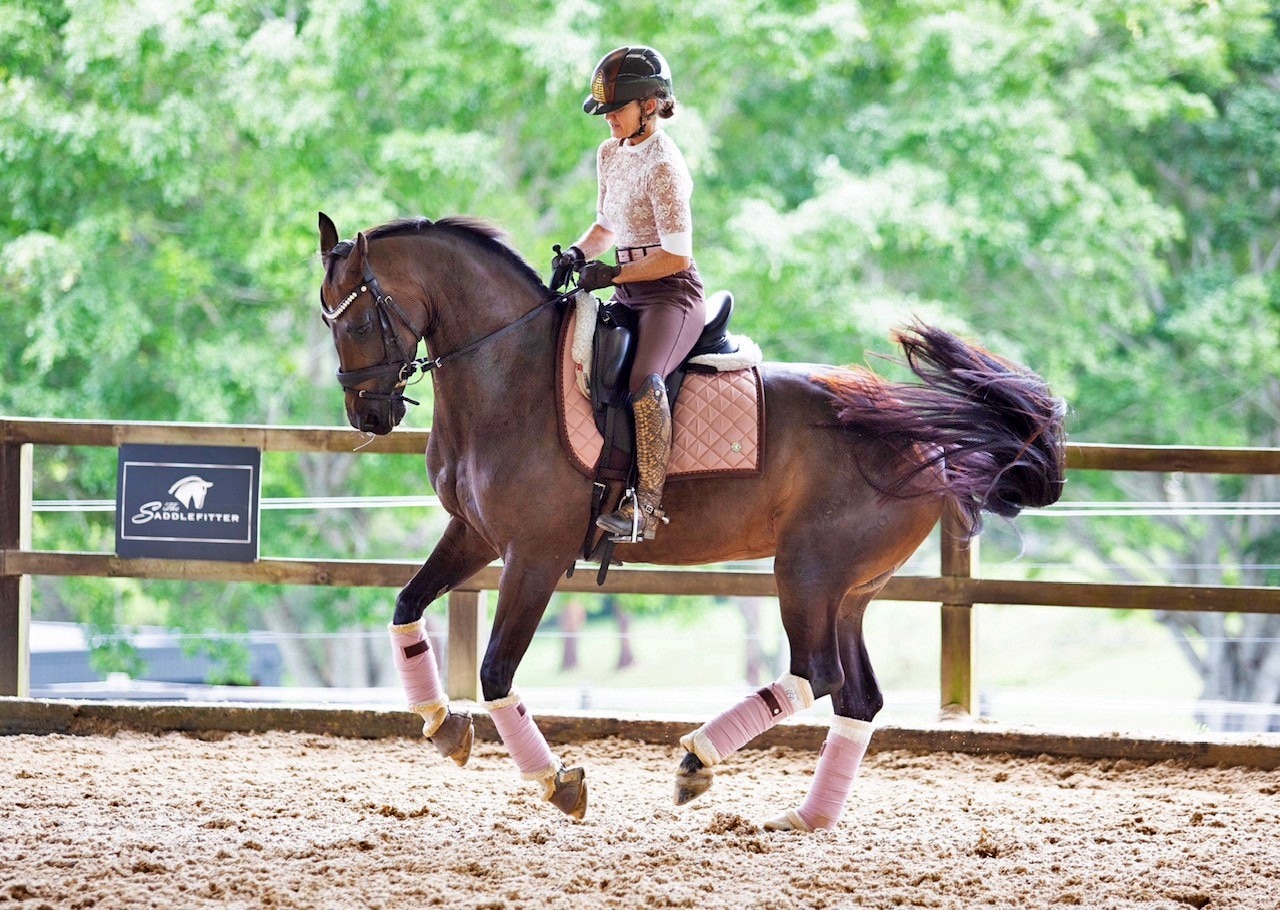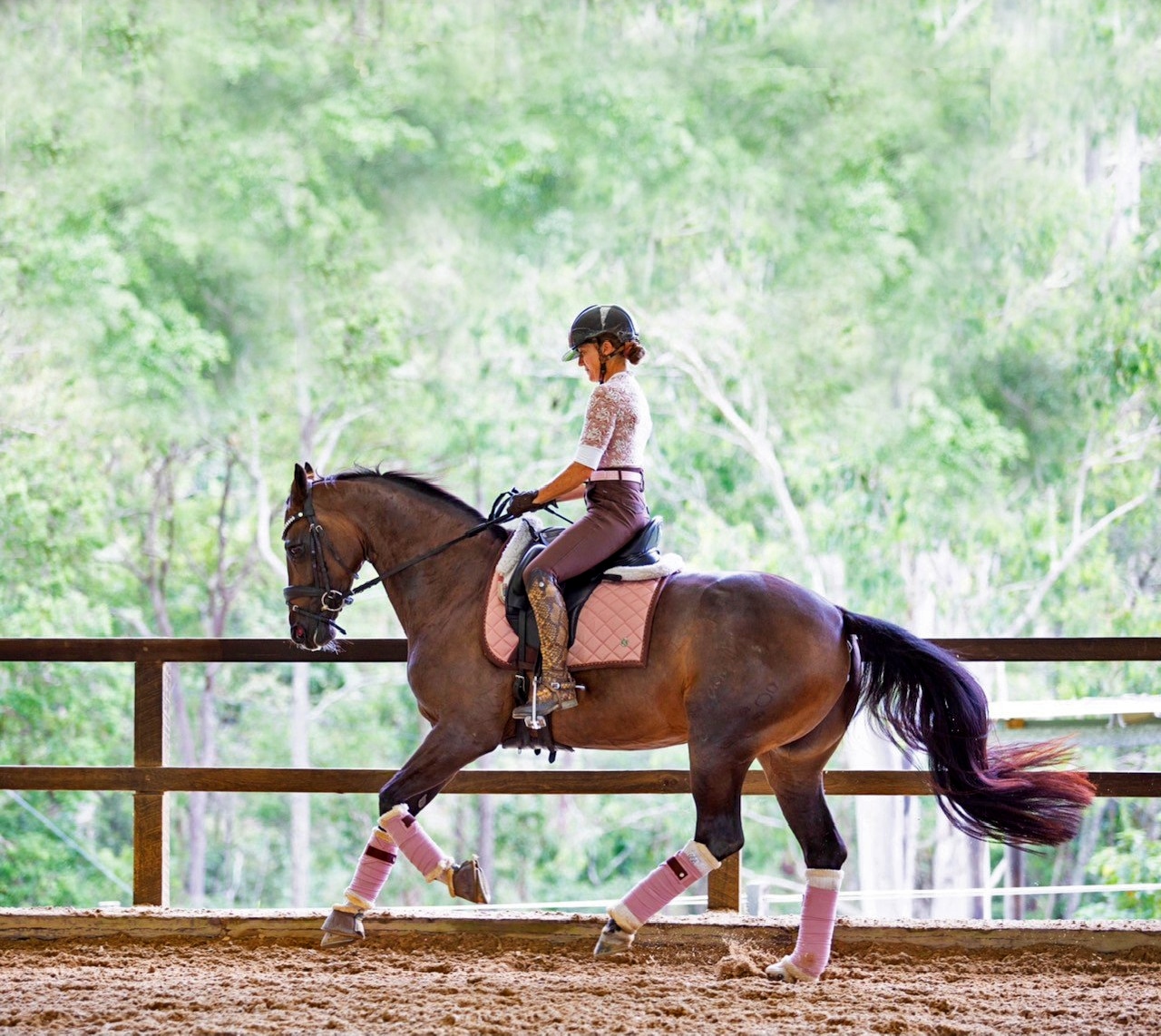
Unpacking behind the vertical
Behind the vertical is a topic that has attracted hot debate in recent times. NICOLE TOUGH looks deeper into what it is, and what it is not.
Our National Dressage Rules explain that in all work, even at the halt, the horse must be on the bit. A horse is said to be on the bit, ‘when the neck is more or less raised and arched according to the stage of training and the extension or collection of the pace, accepting the bridle with a light and consistent, soft, submissive contact. The head should remain in a steady position, as a rule slightly in front of the vertical, with a supple poll as the highest point of the neck, and no resistance should be offered to the rider’.

To score a 10 in any dressage movement or transition, the horse, in addition to other requirements, should be postured in this ideal position – which is quite difficult to ascertain and maintain. If we could all do it, we would, because everyone committed to their horse and the sport is working hard to achieve this ideal.
But even if the rider is seeking the ideal frame in the correct way, our horses offer many evasions to avoid this way of going because it requires willingness from an animal with a mind of their own, and it’s physically taxing. As humans complain about going to the gym, so do our horses. Does this make the gym bad? No, going to the gym is actually very good for us, suppling and strengthening our bodies to be in fit and healthy condition, hopefully prolonging our lifespan.
However, in recent times ‘behind the vertical’ (BTV) has emerged as an area of hot debate, often being used to criticise riders and label their efforts as below average or even cruel. In fact, I often wonder whether BTV has been confused with rolkur, a controversial practice defined as ‘forcing the horse into an extremely deep posture for an extended period of time’. So, let’s unpack BTV, what it actually means, and why it might be deliberately or accidentally employed.
The ideal position for a dressage horse is working on, or slightly in front of the vertical, with their nose aligned to an imaginary vertical line extending from the poll to the nose. BTV is when the nose is to some degree behind the imaginary line, and can be:
- an example of evasion
- a correction of another evasion
- evidence of a horse not in the right balance
- a contact fault caused by lack of rider core strength
- caused by misunderstanding
- where the horse is working more correctly over the back than it otherwise wants to
- where the rider can momentarily and more easily achieve self-carriage and/or suppleness at the poll
BTV is one of many contact faults. Others include:
- Leaning on the bit – the horse braces against the bit, pushing down on the reins and evading self-carriage
- Pulling and/or snatching – showing resistance to the restriction of the rein and instead of acceptance, pulling the riders hands into a position that suits the horse
- Above the bit – the horse carries their head too high, resisting contact
Additional faults to add to this list include being behind the bit, tossing the head, tilting, and tongue waving. Yet out of all these contact issues, BTV is the one that draws the most negative comment.
BTV first attracted attention in 1980 with the Olympic gold medallist Nicole Uphoff and Rembrandt. By all accounts, Rembrandt was a hot and spooky character, and inviting him to warm up in a less classical deeper frame, where he couldn’t see as much to spook at, proved a more productive and safer method of achieving relaxation and throughness. Once he was with his rider, he could be elevated to the ‘show frame’ and ridden softly, safely and correctly, scoring the world’s first 10s.
It is true that horses cannot see above their eyes. A spooky, tense horse will want to hold their head as high as possible increasing their range of sight; a serene horse will lower their neck and head with no need to scope their surroundings. A relaxed horse will happily graze, while a tense horse will be neck high, perhaps snorting with their body in a braced position poised for flight.
Dressage trainers may invite a tense horse, who may be rigid in the back or blocking flexion at the poll, into a lower BTV frame to achieve more looseness and suppleness. They may even choose to compete the horse in this less than ideal position for a movement, knowing it will not score as well. Indeed, judges are obliged to deduct a mark when a movement is ridden BTV. If ‘all other requirements of the training scale are shown and the movement is ridden with fairly good accuracy’, the movement may attract a mark of 7 with 30% deducted for the less than ideal frame.
To counter evasion, dressage trainers may use methods in direct opposition to the evasion. This can be useful in developing athleticism. For example, if the horse wants to: lean, give them nothing to lean on; run, ride them slower; dawdle, ride them with more power-on; bury their head to evade being in balance on the haunches, ride them up; hollow to avoid connecting, ride them deeper; be earthbound, ask them to be quicker off the ground; be too quick, ask them to be longer on the ground.
Similar to many other methods, BTV can be an example of incorrect training. But it can also be due to rider misunderstanding; or being deliberately used to promote relaxation or to push a horse through to correct another evasion; or the rider’s best effort to correctly connect their horse.
To be absolutely clear, let me conclude this article by saying that the point here is not in any way meant to justify BTV. Rather, it is to explain that dressage riding in the ideal position is not easy – and until we are getting 100% in dressage tests, we will always aspire to improve.
For more information on lessons or a clinic with Nicole, visit Nicole Tough.


